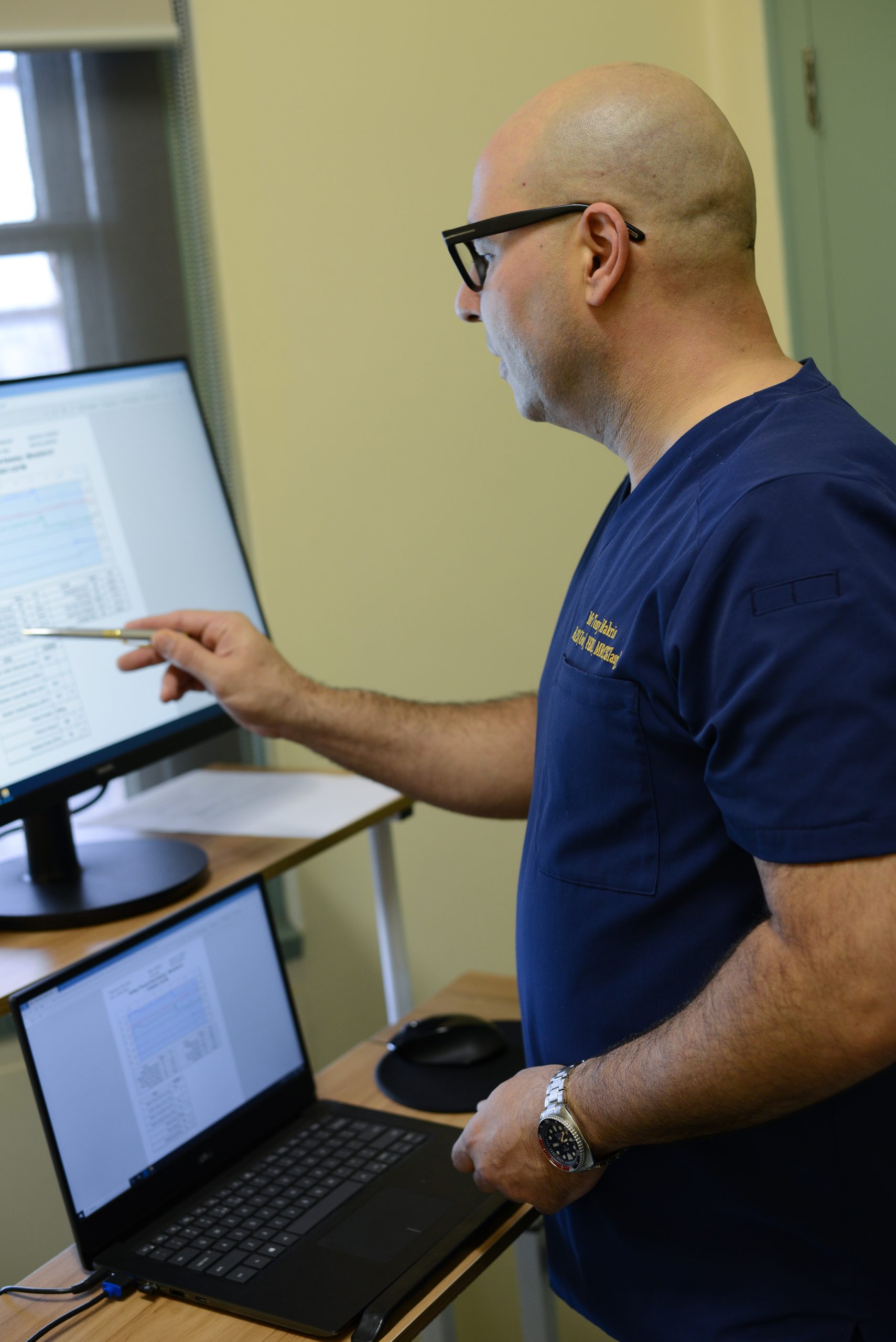Urodynamics
What does this procedure involve?
Urodynamic testing involves filling your bladder with fluid through a small, soft catheter (tube) and measuring how your bladder responds to filling. We also measure how well your bladder works when you pass urine.

What are the alternatives?
There are no real alternatives to urodynamic studies, apart from treating you without the information that the test might provide.
What happens on the day of the procedure?
Dr. Makris (or a member of our team) will review your history and medications, and will briefly discuss the procedure with you again. You must let the staff know if you have any allergies, especially to latex.
We usually ask you to come for the procedure with a comfortably full bladder. This allows us to:
- Measure your urinary flow rate – before we carry out the urodynamic studies; this involves passing urine into a special machine.
What happens during the procedure?
You will lie on a examination couch and we will pass a fine plastic catheter (tube) through your urethra (waterpipe) into your bladder: sometimes this catheter is passed through your tummy wall (if you have a suprapubic catheter) or through a Mitrofanoff channel. If, as occasionally happens, we cannot pass a catheter into your bladder, you may need to have one inserted, before the test can be carried out. This may be done using a fine telescope (flexible cystoscopy), usually at a later date. This is rarely necessary.
We put a second, fine catheter into your rectum (in men and most women) or into your vagina (in some women). If you have a bowel stoma (ileostomy or colostomy), the second catheter may need to be put into your stoma. You should bring a spare stoma bag with you.
Once all the catheters are in place, they will be taped to your leg and connected to a computer system which measures the pressure. The test may be done with you lying on a couch, sitting or standing.
We fill your bladder slowly with saline (salt water) solution through the catheter. We then ask you to cough or strain during the test and to tell us when you first feel fluid going into your bladder. We will continue filling the bladder until you experience the first desire to pass urine. The filling will continue to the level you normally would go to the toilet to empty your bladder, and finally when you cannot postpone voiding any longer.
All of the above are sensations you would normally experience in your every day activities. We are trying to recreate what happens with your bladder as it fills with urine. If at any stage you feel uncomfortable please let us know and we will adjust the urodynamic study.
If one of your symptoms is incontinence (leakage), we will try to reproduce this using a variety of measures. Do not be embarrassed about this; we will be supportive and respect your dignity throughout the process. We will encourage you to hold on until your bladder feels very full.
To finish the test, we ask you to pass the fluid in your bladder into a flow-rate machine again. We then remove all the catheters and you can wash and dress yourself.
Dr. Makris will discuss the results with you and advise on treatment.
Are there any after-effects?
The possible after-effects and your risk of getting them are shown below. Some are self-limiting or reversible, but others are not. We have not listed very rare after-effects (occurring in less than 1 in 250 patients). The impact of these after-effects can vary a lot from patient to patient:
- Burning and discomfort – 1 in 10 patients
- Blood in your urine – 1 in 10 patients
- Infection in your urine – 1 in 10 patients
(You will be given a prophylactic antibiotic at the end of the procedure to help reduce the risk of infection) - Inability to pass catheter into your bladder – 1 in 50 patients
(If this happens, the procedure will need to be abandoned and further testing will be arranged) - Retention of urine (inability to empty your bladder) – 1 in 250 patients
(very rare. If it happens, a temporary catheter will be inserted in your bladder) - Failure to find the cause of your symptoms – 1 in 250 patients
(a repeat test may need to arranged at a later date)
What can I expect when I get home?
You should drink plenty of fluid for the first 24 to 48 hours to help reduce the risk of urine infection. As previously mentioned, a prophylactic antibiotic will be given after the procedure. If frequency of urination, a burning sensation and strong smelling urine persists for longer than 48-72 hours, please get in touch with Dr. Makris’ rooms or your GP to prescribe a full course of antibiotics.
A summary letter of the outcome will be posted to your GP.
References
British Association of Urological Surgeons